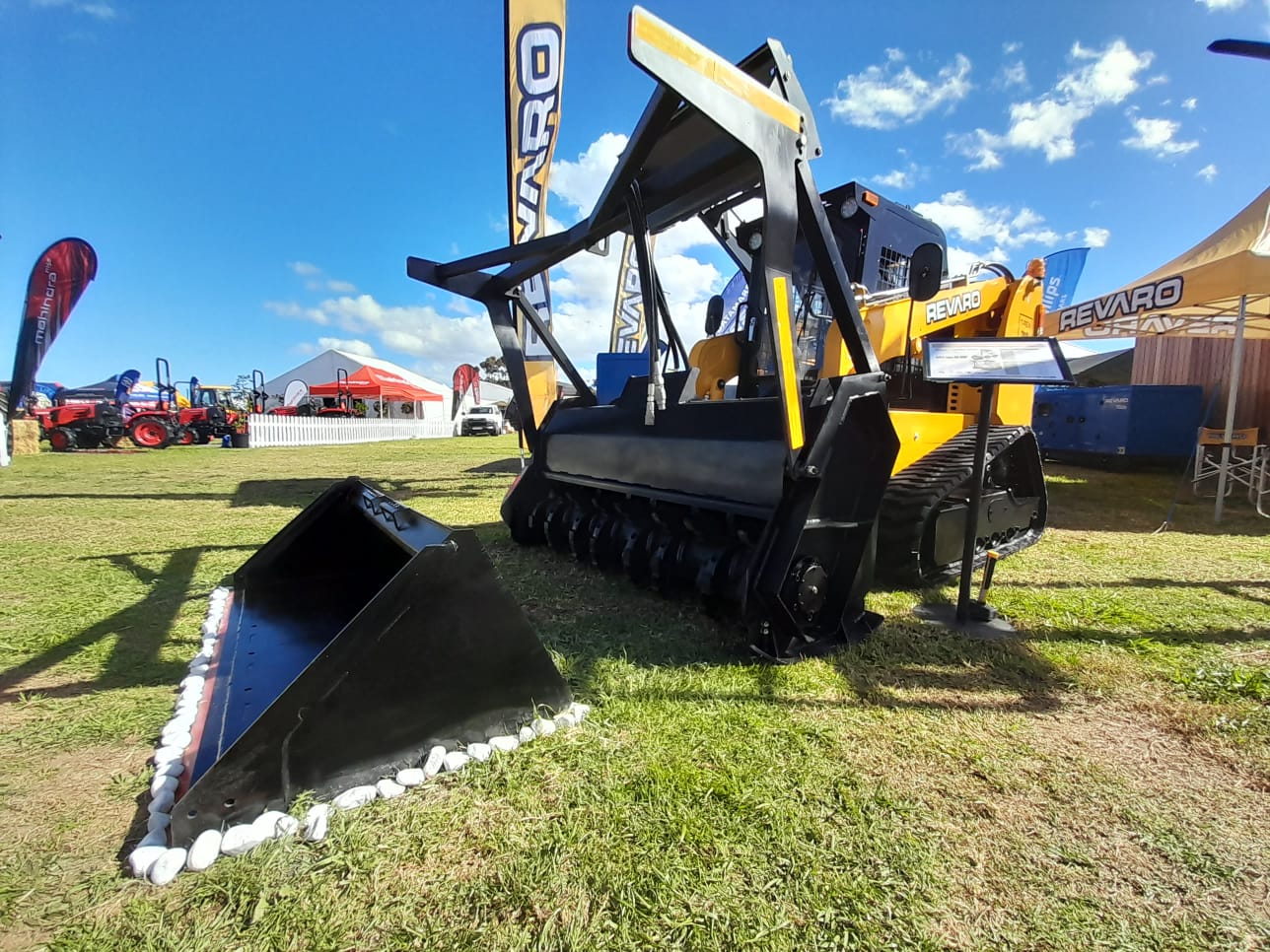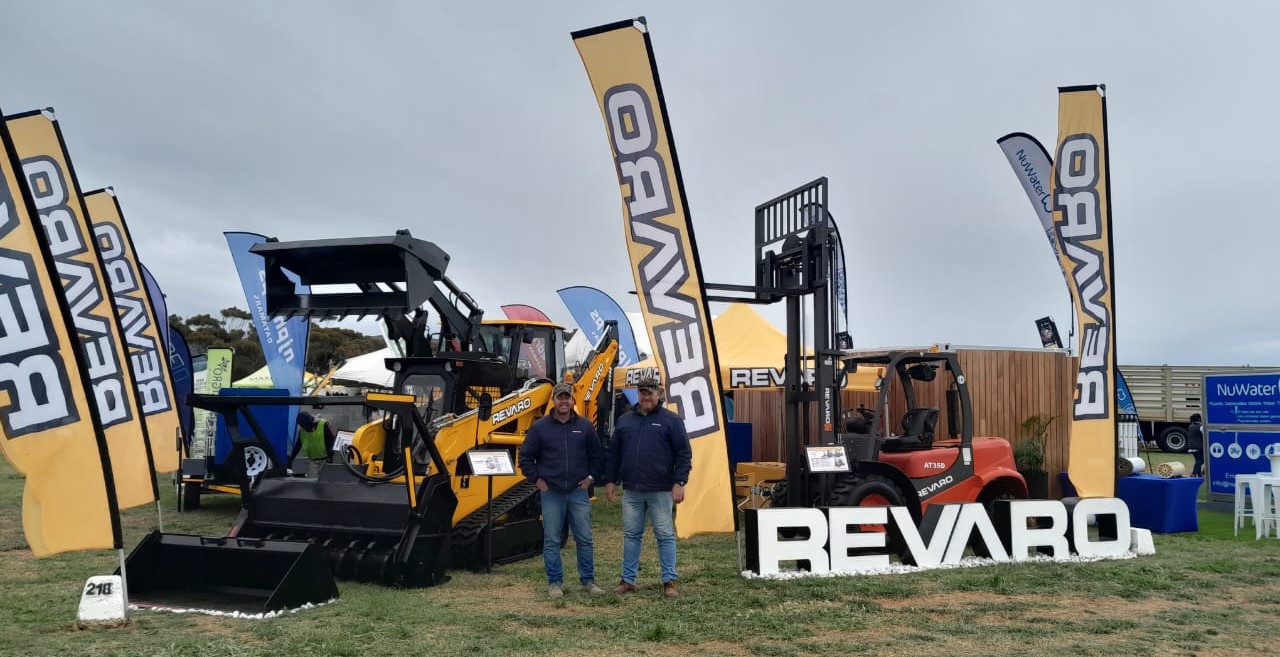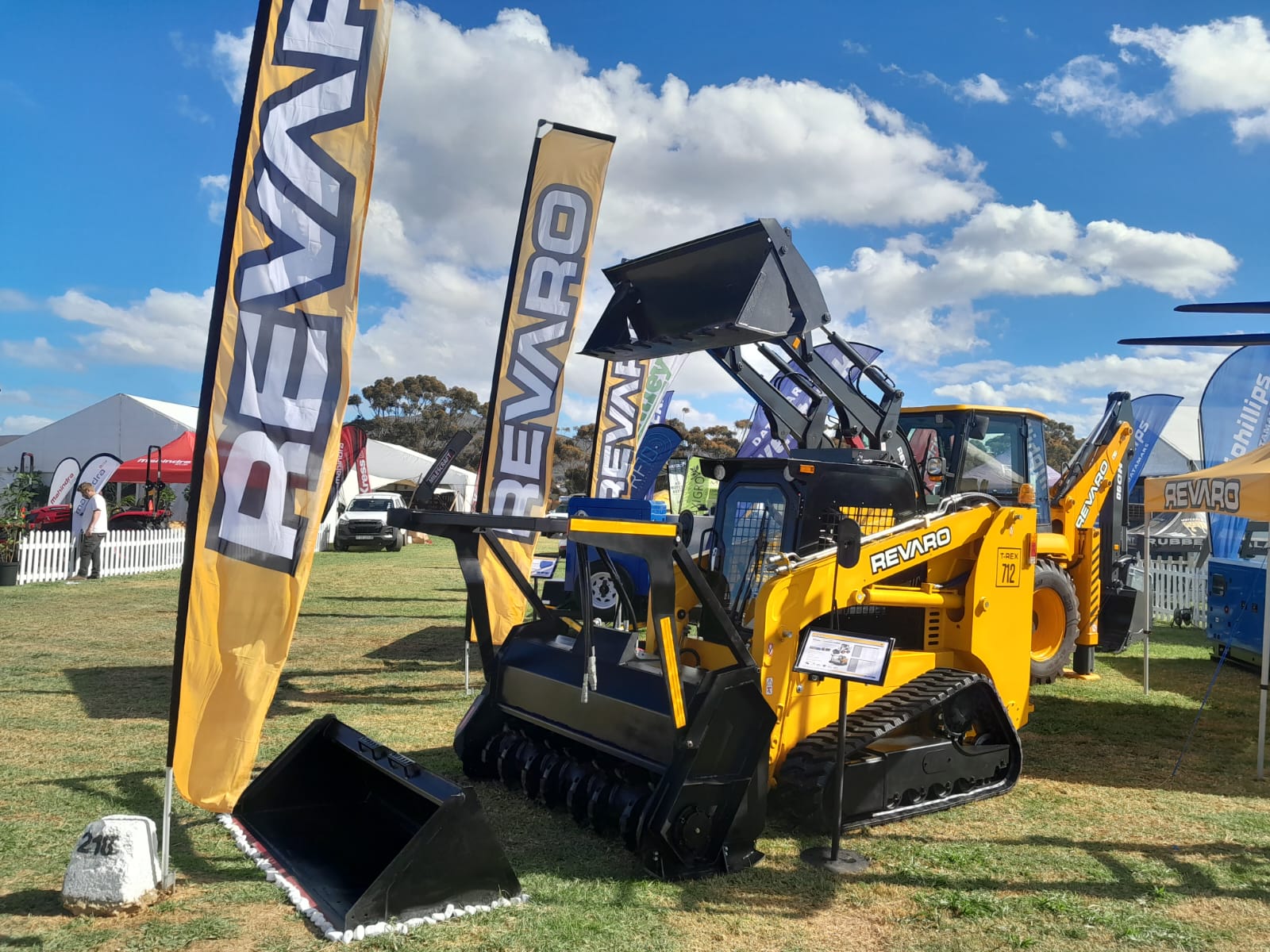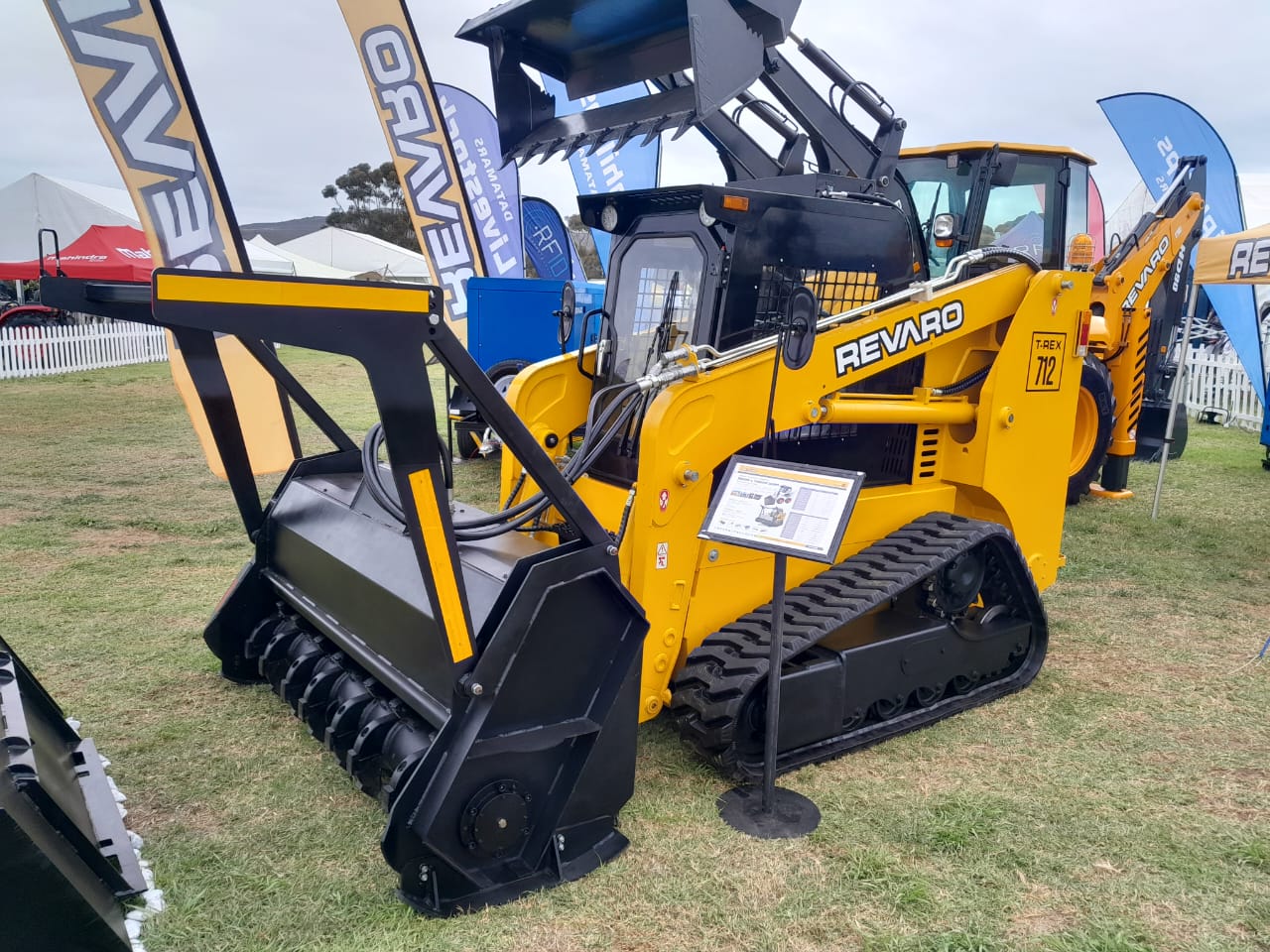The T-REX712 track steer loader is the latest edition to the Revaro range of products for agriculture and construction. This compact machine (3 700 x 2 030 x 2 160) offers a rated capacity of 1 200 kg, 0,55m³ bucket capacity, net power of 74,9 kW and a Weichai engine.
A track steer loader, also known as a compact track loader (CTL), is a versatile construction and agricultural machine that operates using a set of rubber or synthetic tracks instead of traditional wheels. These tracks allow it to work effectively in a wide range of conditions, from rough and uneven terrain to soft and muddy surfaces.
Here’s how a track steer loader works:
Tracks: The most distinctive feature of a track steer loader is its rubber tracks. They distribute the machine’s weight more evenly, reducing ground pressure and minimising damage to delicate surfaces like grass or asphalt. The tracks also offer excellent traction, allowing the loader to operate on slopes and in challenging environments.
Power source: Track steer loaders are typically powered by diesel engines that provide the necessary power to operate the loader’s various functions.
Hydraulic system: A hydraulic system is at the heart of a track steer loader’s operation. It powers the loader’s movement, lift arms, and attachments. The hydraulic system uses hydraulic fluid under pressure to control these functions.
Operator controls: The operator of the track steer loader sits in a cab with easy access to controls. These controls vary depending on the specific model and manufacturer, but typically include joysticks or levers to operate the loader’s movement and attachments. The operator uses these controls to steer the machine, raise and lower the lift arms, tilt the bucket or attachment, and control other functions.
Attachments: Track steer loaders are highly versatile due to their ability to accept a wide range of attachments. Common attachments include buckets, forks, grapples, augers, trenchers, and more. These attachments are connected to the lift arms and are operated hydraulically.
Operation: To operate a track steer loader, the operator first starts the engine and engages the hydraulic system. He then uses the controls to move the machine forward, backward, and turn left or right. The tracks provide the necessary traction for these movements. The operator can also raise or lower the lift arms to control the height of the attached equipment, such as a bucket. Depending on the attachment, he can perform tasks like digging, lifting, loading, and grading.
Versatility: One of the key advantages of track steer loaders is their versatility. Operators can quickly switch between different attachments to perform a wide range of tasks on construction sites, farms, landscaping projects, and more. This versatility makes them a valuable tool for various industries.
Safety: Operators must follow safety guidelines and receive proper training to operate track steer loaders safely. These machines can be powerful and have the potential to cause accidents if not used correctly.
Benefits for the farmer
Agricultural compact track loaders, such as Revaro’s T-REX712 track steer loaders, offer an array of advantages that greatly benefit farmers. These machines are designed to enhance productivity and provide unbeatable traction in all weather conditions. They bring together extensive expertise in compact equipment and innovative features to help farmers excel in various agricultural operations.
With features like excellent stability, maximum durability, advanced attachment capabilities, low ground pressure, and superior traction, Revaro track steer loaders are well-suited for a wide range of agricultural tasks.
One significant advantage of using agricultural machinery like Revaro track steer loaders on farms is the significant boost in production. These versatile machines can accommodate a variety of attachments, including bale forks, backhoes, buckets, augers, trenchers, grass cutters / mowers, mulchers, and more. This adaptability allows farmers to efficiently handle tasks such as material lifting (for example grass, hay, seed, animal feed, crops, fencing), digging, trenching, irrigation, and fence pole installation.
Maintenance tasks are also streamlined and improved with track steer loaders, making it easier to manage activities like mowing, hedge trimming, stall cleaning, spreading feed, stump removal, forestry maintenance, and more.
The benefits of these machines extend beyond productivity. They eliminate the need for owning multiple specialised machines, reducing equipment costs. Revaro track steer loaders are built to withstand tough and rugged environments, offering longevity compared to competing brands.
Choosing a Revaro track steer loader also provides access to preventative maintenance and a vast selection of available parts for repairs and efficiency enhancement through partnerships with our nationwide dealer network.
Furthermore, by utilising rubber tracks, these machines are ideal for worksites with noise restrictions, soft surfaces, flat abrasive surfaces, smoother handling, and cost savings.
The primary advantage of these track-based machines lies in their lower ground pressure and stable operation over uneven surfaces. Their broader weight distribution and lower centre of gravity make them suitable for wet, muddy ground, loose gravel, and sand. Track steer loaders offer smoother rides, increased breakout and lifting force on soft surfaces, and they do not compact the ground.
In summary, the track steers offer farmers enhanced productivity, versatility, cost savings, and durability, making them indispensable tools for modern agricultural operations.












